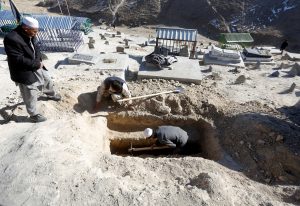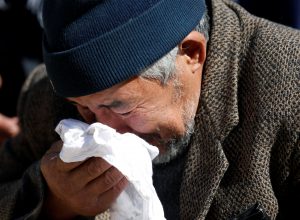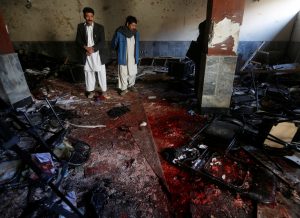
By Hamid Shalizi
KABUL (Reuters) – The Taliban on Monday rejected pleas by Afghan elders and activists for an extension of this month’s ceasefire and said they amounted to a call for surrender to foreign forces.
Taliban spokesman Zabihullah Mujahid dismissed the peace “slogans” and urged civil society activists and others not to join movements he said played into the hands of U.S. and international forces the Taliban wants to force from the country.
“They are not speaking about the occupation or the withdrawal of foreigners. Their objective is that we lay down our weapons and accept the regime imposed by the invaders,” he said in a statement.
A truce over the three day Eid al-Fitr festival this month, during which unarmed Taliban fighters mingled with soldiers and civilians in the capital Kabul and other cities has given fresh impetus to the calls for peace, although many also dismiss the ceasefire as a Taliban trick.
A small group of peace marchers who came to Kabul on foot from the southern province of Helmand this month have also gained prominence, with pleas to all sides to end a conflict which has now lasted for 40 years.
“Tribal elders may not be able to bring about peace and create a ceasefire to the whole country but they can for their own districts and they will,” said Dawlat Wazir, an elder in Jani Khil district in the eastern province of Paktia.
In Jani Khil, elders held a meeting that drew hundreds of people at the weekend, calling on the government and Taliban forces to refrain from fighting in their area.
“We are so fed up with operations by government forces in our areas that trigger fighting for days,” said Malek Sakhto, one of the elders behind the meeting. “We’re pleading with the government and the Taliban to agree on a ceasefire and stop killing each other and civilians.”
The success of such local initiatives is mixed and may stand little chance as military operations pick up.
President Ashraf Ghani ordered government forces to stop offensive operations against the Taliban for another 10 days after the end of the ceasefire but there has since been fierce fighting in several areas.
In Logar, to the south of the capital Kabul, local elders and religious scholars have been trying to arrange a ceasefire in Azra district, according to Abdul Wali, a member of the Logar provincial council.
He said an informal accord had been reached but local people were still waiting for an official announcement from the Taliban shadow governor for Logar, Muallah Ismail Akhondzada.
In Kunar province, on the border with Pakistan, another group of walkers is making its way to Kabul, a statement from the governor’s office said.
(Additional reporting by Samiullah Paiwand, Qadir Sediqi; Editing by James Mackenzie and Matthew Mpoke Bigg)











